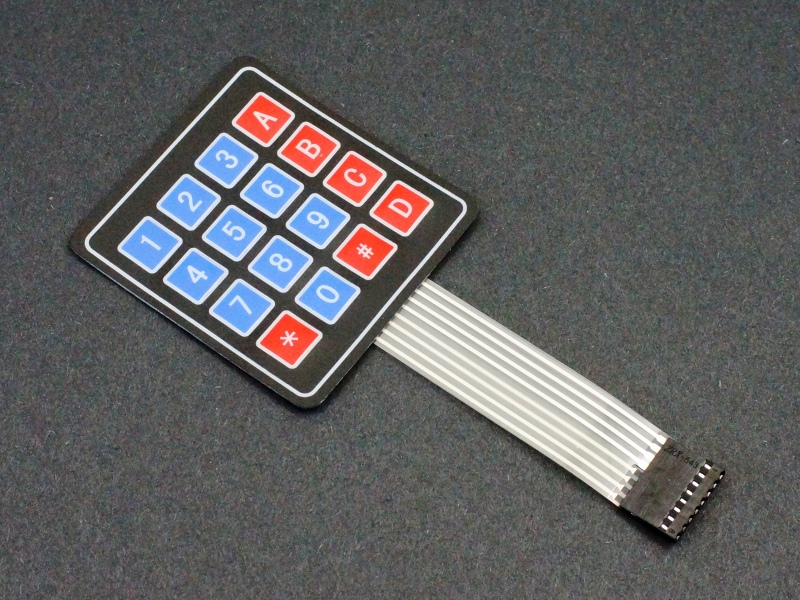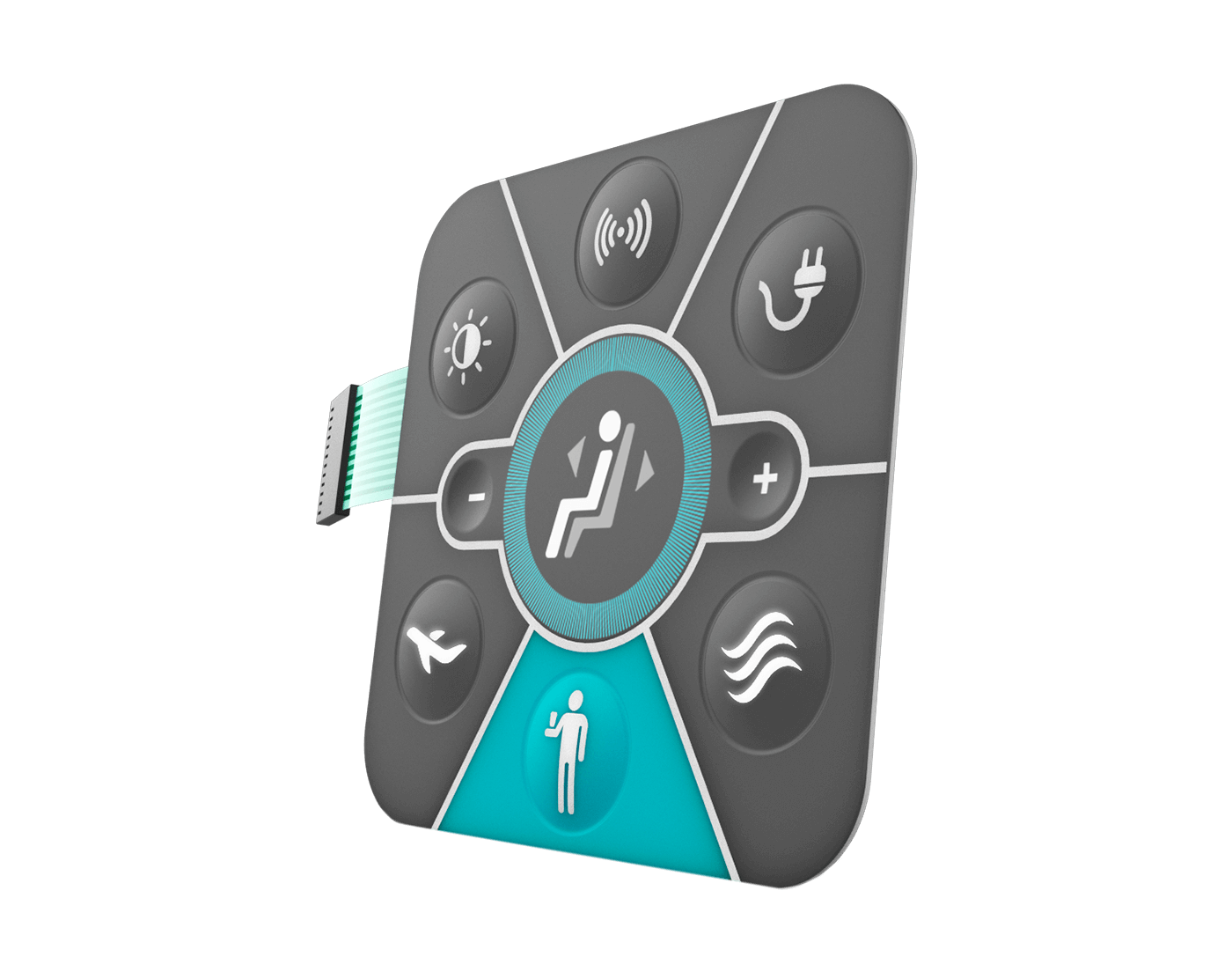Recognizing the Significance of Membrane Switches in Customer Interfaces
Membrane switches are integral elements in the design of efficient interface, promoting not only capability however also improving visual charm and customer interaction. Their distinct attributes, such as resistance to customizable styles and ecological elements, make them appropriate for a varied range of applications throughout multiple markets. As we discover the future trends and different benefits related to Membrane innovation, it comes to be clear that these switches are greater than simply components; they represent a merging of technology and practicality. The ramifications of this modern technology on customer experience are worth analyzing better.
What Are Membrane Buttons?

The spacer layer, which contains sticky buildings, enables the splitting up of the circuit layer from the overlay, making sure that the button stays in a non-activated state until pushed. When stress is put on the overlay, it compresses the spacer layer, linking the space and completing the circuit in the underlying layer. This layout not only decreases the physical space needed for standard mechanical switches yet likewise enhances the durability of the tool, as Membrane switches are typically resistant to dirt, moisture, and various other environmental factors.
Generally discovered in applications varying from consumer electronic devices to medical devices, Membrane switches are important to modern innovation, offering a reliable and easy to use user interface that lines up with modern style needs.
Advantages of Membrane Buttons
While various button technologies exist, Membrane Switches offer unique benefits that make them particularly preferable in numerous applications. One of the primary advantages of Membrane buttons is their compact style, which allows for space-saving implementations in gadgets where property is limited. Their slim account not only enhances aesthetic allure but also assists in lightweight building.
An additional considerable advantage is their resistance to ecological variables. Membrane switches are normally sealed against moisture, dirt, and pollutants, making them suitable for usage popular environments, such as medical gadgets and commercial equipment. This longevity prolongs the life-span of the button, lowering maintenance expenses and enhancing dependability.
Moreover, Membrane buttons can be personalized to fulfill certain design requirements, integrating special graphics and shades that boost user interaction. Their tactile feedback options can also be tailored to provide a gratifying customer experience. In addition, Membrane switches are economical, especially in high-volume applications, as they can be created efficiently.
Applications in Various Industries

In the consumer electronic devices industry, Membrane switches are widespread in visit homepage gadgets such as microwaves, cleaning makers, and remote controls. Their responsive responses and aesthetic options improve user experience while giving a sleek, modern-day appearance. Furthermore, auto makers utilize Membrane buttons in dashboard controls and infomercial systems, where room is limited, and customer engagement is important.
Furthermore, the industrial field leverages Membrane buttons in control panels for equipment and equipment, permitting for intuitive operation in usually severe settings. Their resistance to chemicals and moisture makes sure long life and reliability in these applications. Overall, the flexibility of Membrane Switches contributes substantially to their prevalent use, making them essential in different technological domains.
Design Considerations for Membrane Switches

When making Membrane switches, a number of crucial factors click this site to consider have to be thought about to guarantee ideal performance and individual experience. The choice of materials is critical; selecting durable, high-quality substratums can boost the button's durability and resistance to environmental elements such as moisture and temperature variations.
Second of all, the style of the graphic overlay should focus on quality and simplicity of use. Icons and message need to be readable, and the design should facilitate user-friendly interaction (membrane switches). Additionally, responsive comments is vital; incorporating a responsive dome or various other mechanisms can boost the individual experience by offering physical verification of activation
One more essential factor is the button's electrical efficiency. Designers must make sure that the conductive traces are correctly designed to decrease resistance and prevent signal disturbance. This includes assessing the called for actuation force and making certain compatibility with the electronic parts they will user interface with.

Future Trends in Membrane Modern Technology
As innovation proceeds to advancement, Membrane switches are poised to advance considerably, driven by technologies in materials and producing strategies. One emerging pattern is the unification of advanced products, such as versatile substratums and conductive inks, which enhance sturdiness and lower the overall weight of Membrane buttons. These products not just improve the tactile action yet also enable for the style Discover More of buttons that can withstand harsher environmental conditions.
Moreover, the assimilation of touch-sensitive technologies is transforming conventional Membrane Switches right into even more interactive customer interfaces. Capacitive touch sensing units embedded within Membrane switch panels can give a more user-friendly and responsive individual experience, lining up with the expanding need for streamlined, modern-day layouts in customer electronic devices.
Additionally, advancements in printing techniques, such as digital and 3D printing, enable rapid prototyping and customization of Membrane switches. This flexibility allows manufacturers to respond quicker to market needs and customer choices.
Finally, sustainability is ending up being a considerable focus, with producers exploring environmentally friendly materials and procedures. As these fads unravel, the future of Membrane technology assures boosted performance, aesthetic appeal, and ecological duty, strengthening their function in advanced customer interfaces throughout different industries.
Conclusion
In verdict, Membrane Switches stand for a crucial element in the design of customer interfaces, integrating functionality with visual adaptability. Their advantages, consisting of longevity and resistance to environmental factors, make them ideal for varied applications across numerous sectors. Thoughtful layout considerations boost individual communication and experience. As improvements in technology proceed, the development of Membrane buttons is anticipated to further improve interface, driving innovation and enhancing usability in a progressively complex technical landscape.
Membrane buttons are integral components in the style of reliable user interfaces, helping with not just capability but also improving visual allure and user interaction.Membrane Switches offer as an essential part in various user interfaces, assisting in a smooth communication in between customers and digital devices.While various switch innovations exist, Membrane Switches deal unique benefits that make them specifically preferable in numerous applications.In addition, Membrane buttons can be tailored to meet specific design requirements, incorporating distinct graphics and colors that enhance user interaction.In conclusion, Membrane Switches stand for a crucial part in the style of individual interfaces, integrating performance with aesthetic flexibility.